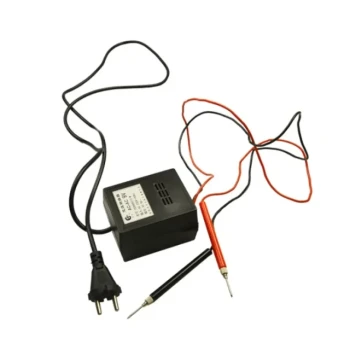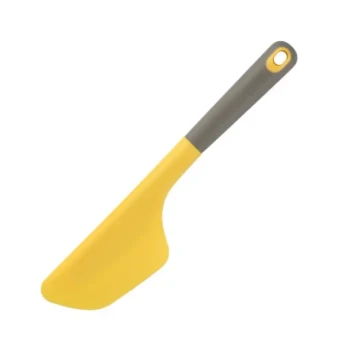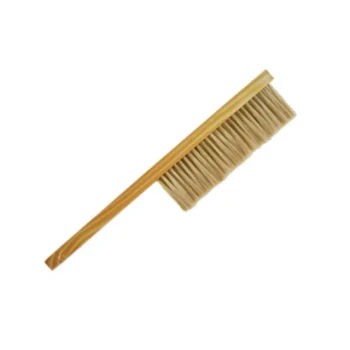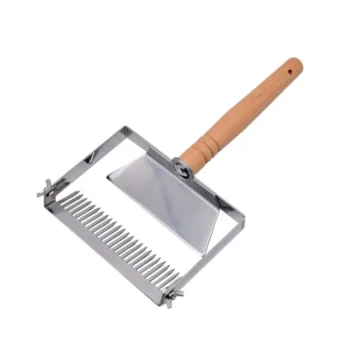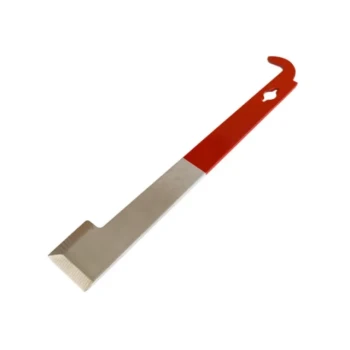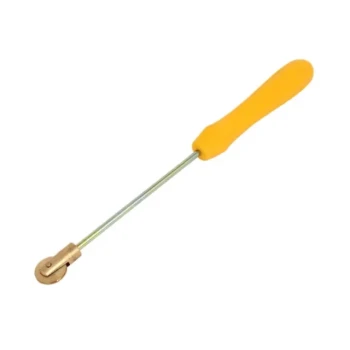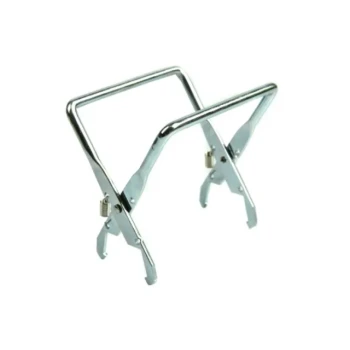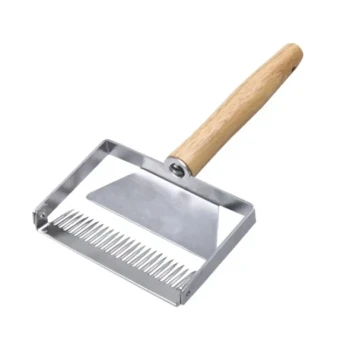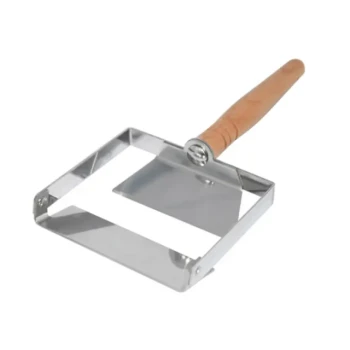In essence, a bee comb is the colony's all-in-one nursery, pantry, and internal framework. Built by honey bees from beeswax, this mass of hexagonal cells is a masterclass in efficiency. It is where bees raise their young (brood), and where they store all of their food—honey for energy and pollen for protein—to ensure the colony's survival.
The bee comb is the functional heart of the colony, but its success is entirely dependent on the larger hive structure that protects it. Understanding the comb is to understand what the bees need to survive, while understanding the hive is to understand your role as a beekeeper in providing that protection.
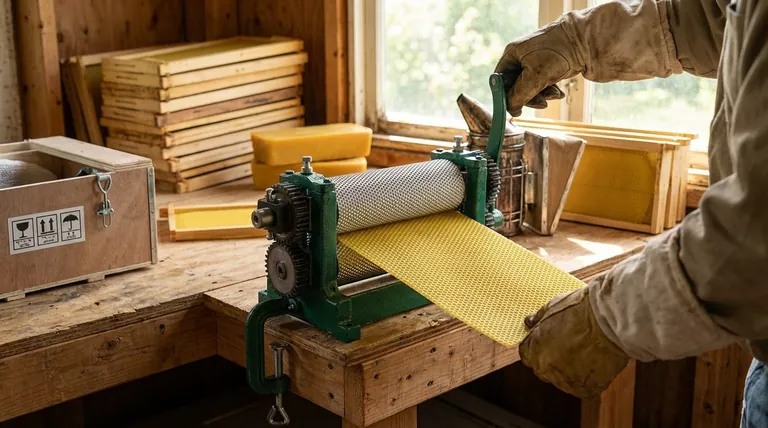
The Core Functions of a Bee Comb
A bee comb is not a simple structure; it is a dynamic space that serves multiple critical purposes simultaneously. Each hexagonal cell is built to precise specifications to maximize strength and storage capacity while minimizing the amount of wax required.
A Nursery for the Next Generation
The primary use of the central part of the comb, known as the brood nest, is to raise new bees. The queen lays a single egg in each cell.
These cells then serve as a protected space for the entire bee life cycle: egg, larva, and pupa. A healthy brood pattern is a key indicator of a strong queen and a thriving colony.
The Colony's Pantry
Surrounding the brood nest, bees use the comb as their food storage system. They fill cells with nectar, which they dehydrate to create honey—their primary carbohydrate and energy source.
Other cells are packed with pollen, which is their source of protein and fats, essential for feeding developing larvae. These stores are what allow the colony to survive winter and other periods when foraging is not possible.
An Engineering Masterpiece
The hexagonal shape of the cells is no accident. It is one of the most efficient shapes in nature, allowing bees to create a strong, stable structure with the maximum possible storage volume for the minimum amount of beeswax.
Why the Comb Needs a Hive
While the comb is the bees' internal world, it cannot exist without the external protection of a hive. As a beekeeper, your primary job is to provide and maintain this structure.
The Foundation and Frames
Modern beekeepers provide a structure for the comb inside a deep hive box, also called a brood box. This box contains frames, which are often fitted with a sheet of "foundation."
This foundation gives the bees a guide, encouraging them to build straight, orderly combs that are easy for the beekeeper to remove and inspect without damaging the colony's structure.
Protection From the Elements
The comb and the brood within it are highly vulnerable to temperature and moisture. A proper inner and outer hive cover is critical.
The cover prevents condensation from dripping down onto the bees, which can chill and kill them. It also helps the hive retain heat during winter and provides shade during the summer, creating a stable internal environment.
Defense and Stability
The entire hive structure, containing all the precious comb, must be protected. A hive stand elevates the hive off the ground.
This elevation keeps the bottom of the hive dry, preventing rot and moisture issues. It also creates a significant barrier against pests and predators that may try to invade the colony.
Understanding the Trade-offs: Managed vs. Natural Comb
While providing frames and foundation is the standard, it represents a choice. Understanding this choice is key to understanding your management philosophy.
The Case for Using Foundation
For new beekeepers, using foundation is highly recommended. It ensures bees build straight combs that are easy to inspect for disease, pests, and the queen's laying pattern.
This controlled environment simplifies hive management and honey harvesting, as the uniform combs are easily handled and fit into extraction equipment.
The Limitations to Consider
While efficient, relying solely on provided foundation limits the bees' natural building instincts. Some beekeepers argue that allowing bees to build their own "natural" comb without foundation lets them create cell sizes best suited for their needs.
However, this approach requires more advanced management, as bees may build irregular "cross comb" that connects multiple frames, making inspections difficult or destructive.
Making the Right Choice for Your Goal
Your equipment and management strategy should align directly with your beekeeping objectives. The hive is a system where each component supports the comb at its center.
- If your primary focus is starting a healthy new hive: Begin with a standard setup including a brood box with frames and foundation to ensure straight combs for easy inspection and management.
- If your primary focus is colony survival through all seasons: Ensure your hive has a proper cover for moisture control and a stand for protection from ground dampness and pests.
- If your primary focus is harvesting honey: Plan to add more boxes ("supers") as the colony grows, giving them dedicated space to build comb and store excess honey.
Ultimately, understanding the comb's central role is the first step toward managing a thriving, productive colony.
Summary Table:
| Function of Bee Comb | Key Details |
|---|---|
| Nursery (Brood Nest) | Queen lays eggs; cells protect the bee life cycle from egg to pupa. |
| Pantry (Food Storage) | Stores honey (energy) and pollen (protein) for colony survival. |
| Engineering Structure | Hexagonal cells maximize strength and storage while minimizing wax use. |
Ready to support your colony with the right foundation?
At HONESTBEE, we supply commercial apiaries and beekeeping equipment distributors with the high-quality supplies needed to build and protect productive hives. From durable brood boxes and frames to essential hive covers and stands, our wholesale-focused operations ensure you get the reliable equipment your bees depend on.
Contact HONESTBEE today to discuss your wholesale needs and ensure your colonies have the strong foundation they require to thrive.
Visual Guide
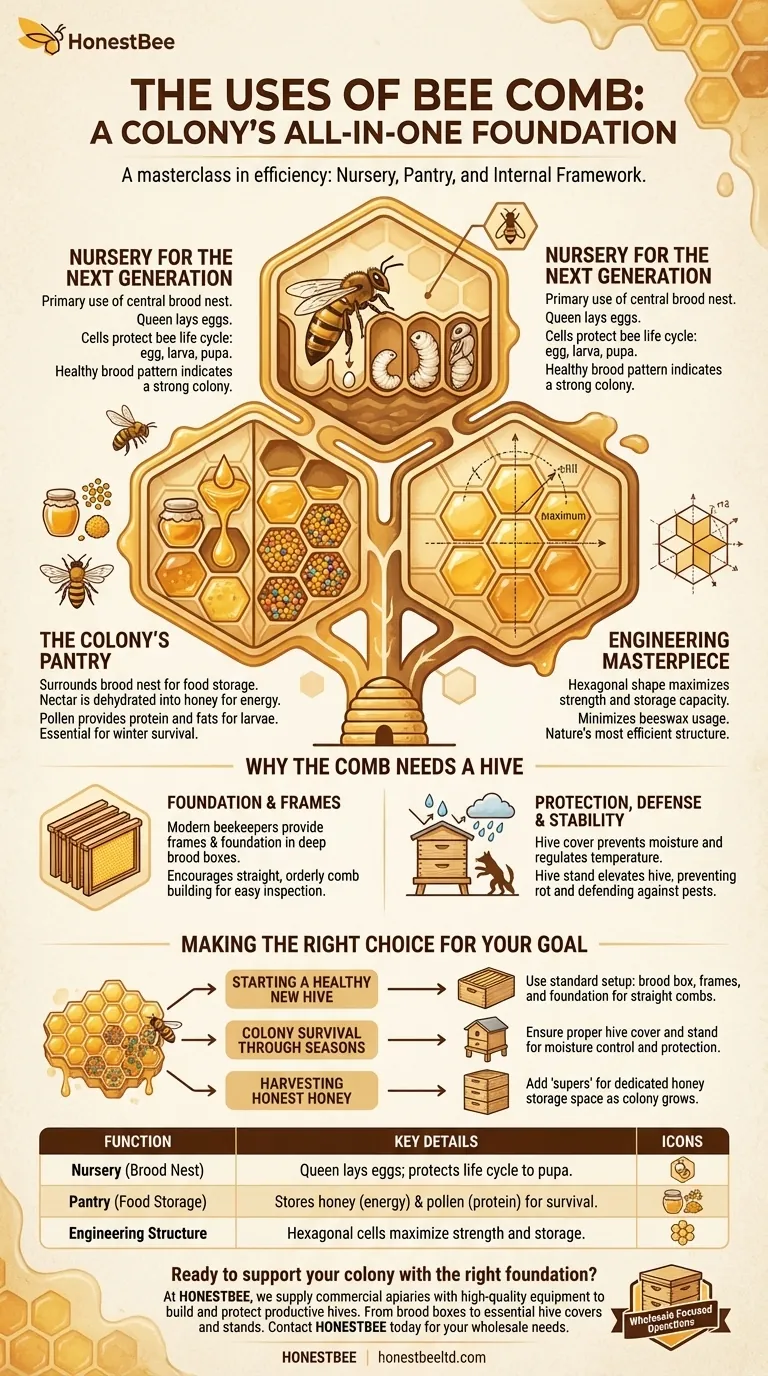
Related Products
- Manual Beeswax Comb Foundation Machine Wax Foundation Mill Embossing Machine
- Professional Frame Preparation: The HONESTBEE Electric Wire Embedder
- Electric Flatting and Embossing Machine with Tray for Beekeeping
- Food Grade Plastic bee Foundation for Bee Frames
- Colorful Silicone Beeswax Foundation Mold Mould for Beekeeping
People Also Ask
- How do honeybees use wax in their hives? The Key to Colony Survival and Structure
- What is the use of a comb foundation mill? Boost Honey Production with Strategic Hive Control
- What is the importance of soaping the rollers during milling? Prevent Wax Adhesion & Equipment Downtime
- Why is it beneficial to make your own beeswax foundation? Gain Control Over Cost, Purity & Hive Health
- How should stuck wax on mill rollers be removed? A Gentle, Non-Damaging Cleaning Method

